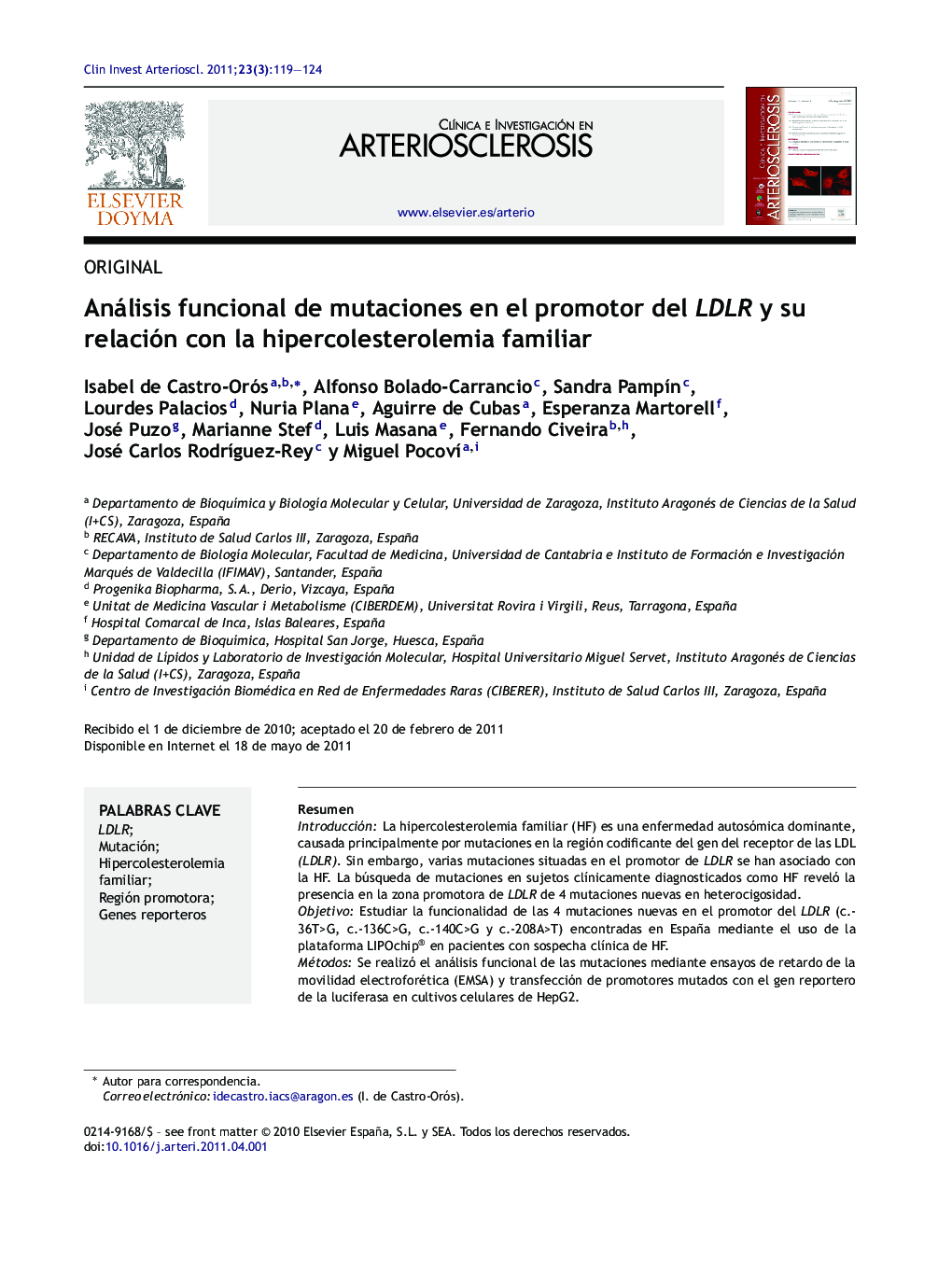| Article ID | Journal | Published Year | Pages | File Type |
|---|---|---|---|---|
| 2839783 | Clínica e Investigación en Arteriosclerosis | 2011 | 6 Pages |
ResumenIntroducciónLa hipercolesterolemia familiar (HF) es una enfermedad autosómica dominante, causada principalmente por mutaciones en la región codificante del gen del receptor de las LDL (LDLR). Sin embargo, varias mutaciones situadas en el promotor de LDLR se han asociado con la HF. La búsqueda de mutaciones en sujetos clínicamente diagnosticados como HF reveló la presencia en la zona promotora de LDLR de 4 mutaciones nuevas en heterocigosidad.ObjetivoEstudiar la funcionalidad de las 4 mutaciones nuevas en el promotor del LDLR (c.-36T>G, c.-136C>G, c.-140C>G y c.-208A>T) encontradas en España mediante el uso de la plataforma LIPOchip® en pacientes con sospecha clínica de HF.MétodosSe realizó el análisis funcional de las mutaciones mediante ensayos de retardo de la movilidad electroforética (EMSA) y transfección de promotores mutados con el gen reportero de la luciferasa en cultivos celulares de HepG2.ResultadosLas mutaciones c.-136G y c.-140G localizadas en el elemento regulador R3 mostraron un cambio significativo en el patrón de afinidad por las proteínas nucleares en los EMSA. Además, estas mutaciones produjeron una reducción de la actividad del promotor LDLR del 88-93%. Las mutaciones c.-36G y c.-208T no provocaron cambios significativos ni en los experimentos EMSA ni con genes reporteros.ConclusionesLas mutaciones localizadas en el elemento R3 se asocian con HF, mientras que las que se encuentran fuera de los elementos reguladores del promotor de LDLR no son causa directa de hipercolesterolemia. Nuestros resultados revelan la importancia de realizar análisis de funcionalidad de las variantes encontradas en la región promotora de LDLR con objeto de conocer su implicación con el fenotipo HF.
IntroductionFamilial hypercholesterolemia (FH) is an autosomal dominant disorder mainly caused by mutations in the coding region of the LDLR gene. However, a variety of mutations within the LDLR promoter have been associated with FH. Genetic screening in persons clinically diagnosed with HF revealed the presence of four new heterozygous mutations within the promoter region.ObjectiveTo study the functionality of the four new LDLR promoter mutations (c.-36T>G, c.-136C>G, c.-140C>G and c.-208A>T) found in Spain, using the LIPOchip® platform in patients with clinically suspected FH.MethodsThe functional analysis of mutations was carried out by using electrophoretic mobility shift assays (EMSA) and luciferase reporter gene expression in HepG2 transfected cells with the mutated promoters.ResultsTwo mutations, c.-136G and c.-140, located within the R3 regulatory element, showed a significant change in the pattern of nuclear binding protein affinity. Moreover, these mutations reduced the residual activity of the LDLR promoter by 88-93%. However, mutations c.-36G and c.-208T, located outside the response elements, produced no significant changes in EMSA experiments or reporter genes.ConclusionsMutations within the R3 element are associated with FH, while those located outside the regulatory elements of the LDLR promoter are not a direct cause of FH. Our results reveal the importance of functional analysis of the new variants in the LDLR promoter region to identify their role in the FH phenotype.
